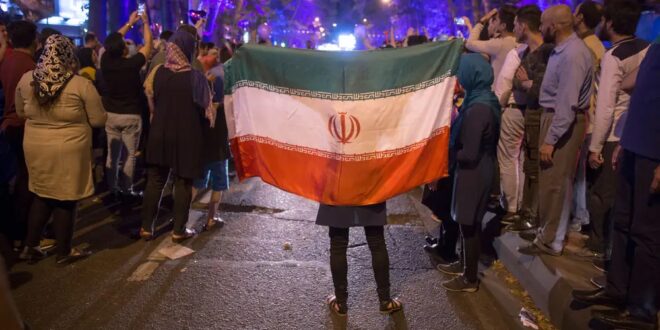The trend lines in US-Iran relations today make for grim reading in Washington. Faced with unrelenting US pressure, Iran’s leaders are regularly meeting with Russian and Chinese officials and pledging unprecedented levels of cooperation. Iran’s nuclear program recently crossed a key threshold into production of weapons-grade uranium.
American policymakers today face a key inflection point in the bilateral relationship, and the “no nuclear deal, no crisis” dynamic appears increasingly unsustainable.
Hawkish analysts are calling for a renewed Iran strategy focused on a formal exit from the dormant — or dead — JCPOA, increased sanctions coordination and interdiction efforts, and forward deployment of US military assets. But this amounts to little more than a rehash of the Trump administration’s “maximum pressure” strategy, which failed to achieve any of its stated objectives and instead led Iran to ramp up its nuclear program and increase its proxy attacks.
The ultimate coercive tool for the US would be an act of war — an attack on Iran’s nuclear facilities or key military centers.But Washington’s willingness to use the military option is less than credible today. An attack on Iran could not be subcontracted out to Israel; such a major endeavor would require US participation. But would President Joe Biden, or any other US president, be willing to stake a term’s worth of political capital on such a tremendous risk?
Amidst the backdrop of the US’s disastrous efforts in the Middle East over the past two decades, a desire to focus on China, and the long war in Ukraine, the Islamic Republic is probably not immediately fearful of an attack. Additionally, many Israeli and American officials openly admit that an attack on Iran’s nuclear facilities might do very little to set back its nuclear progress. Indeed, attacks may incentivize Tehran to proceed more quickly with its nuclear program.
If coercive tools fall short of achieving key American objectives, engagement options could still offer a better way out of the nuclear stalemate. Since the Trump administration’s exit from the JCPOA, a diplomatic asymmetry has halted progress in the nuclear talks.
Tehran had no means of dispute resolution after the US’s unilateral exit and no way to recover lost revenues after the US stepped out of compliance with the accord. It remains skeptical of the credibility and durability of a US commitment to provide sanctions relief, and its dangerous security environment and rigid revolutionary ideology preclude the possibility of a first step towards Washington.
Some tools of engagement are still available to the Biden administration which could change this calculus and induce Tehran back toward accepting curbs on its nuclear program.
First, Iranian assets frozen abroad (particularly in South Korea and Iraq) have long been discussed as part of a package to return to the JCPOA but have never been released by Washington.
Second, Tehran has voiced understandable concerns about the limited practical impact of US sanctions relief – Washington should signal that in the event of a nuclear agreement, it would take steps to provide proactive assurances to investors and financial institutions that sanctions have been verifiably lifted.
Third, in the event of serious Iranian interest in restoring a nuclear accord, the US should be prepared to decouple a deal’s curbs on Iranian nuclear advances from the IAEA’s longstanding safeguards probe into potential past undeclared nuclear activity, and apply diplomatic pressure as such.
Such steps may not be sufficient to restore the JCPOA – the original terms of the deal will likely never return due to the diplomatic damage of recent years, and a broader rapprochement is off the table in the medium-term.
But these measures could be enough to signal enough good faith to shift Tehran’s perceptions and build momentum for an interim agreement which restores international monitoring access to Iran’s nuclear facilities and stops its production of weapons-grade uranium. Paired with private US messaging to China, they could also bolster multilateral diplomatic efforts to pressure Iran back into curbing its nuclear advances.
Iran’s domestic uprising has captured global attention and must merit a mention. The IRI’s hardliners continue to consolidate power via a bloody and brutal crackdown on its citizens and have continued to badly damage the state-society relationship. The “Women, Life, Freedom” movement deserves Americans’ attention and solidarity. But US policymakers can do little to alter the direction of this social movement and extensive attempts to do so could backfire.
Abandoning diplomatic efforts to prevent the Islamic Republic from acquiring a nuclear bomb risks paving a path toward the IRI’s further entrenchment and creating new, dangerous post-revolutionary scenarios involving unsecured nuclear material.The proposals provided here face a stark uphill battle in the current domestic and geopolitical environments. But for Washington, resigning itself to the worst-case outcome risks becoming a self-fulfilling prophecy. Without any momentum towards a new deal, the likelihood of a new crisis grows greater.
 Eurasia Press & News
Eurasia Press & News



